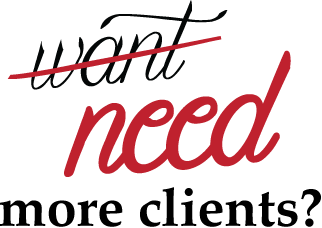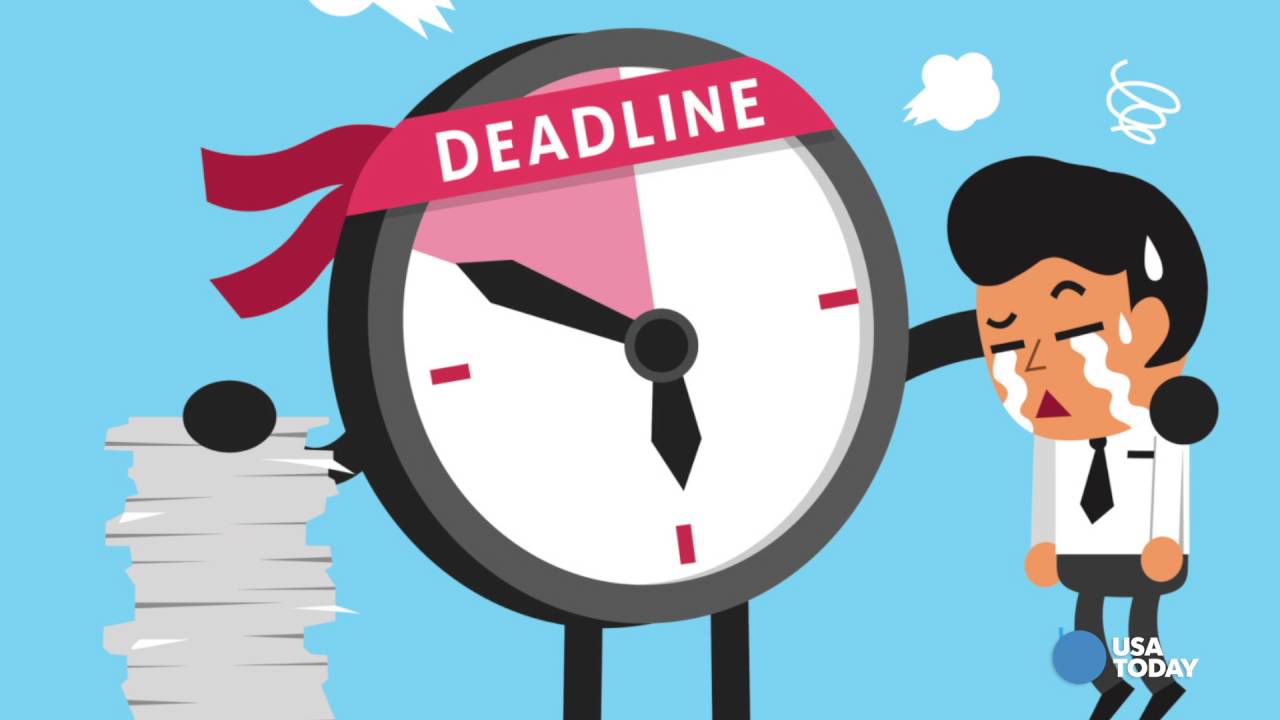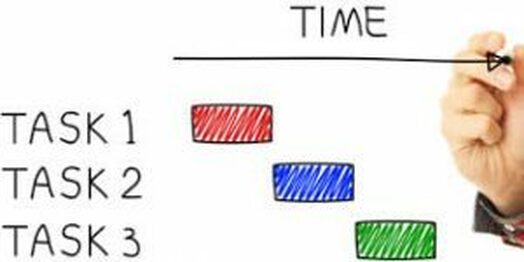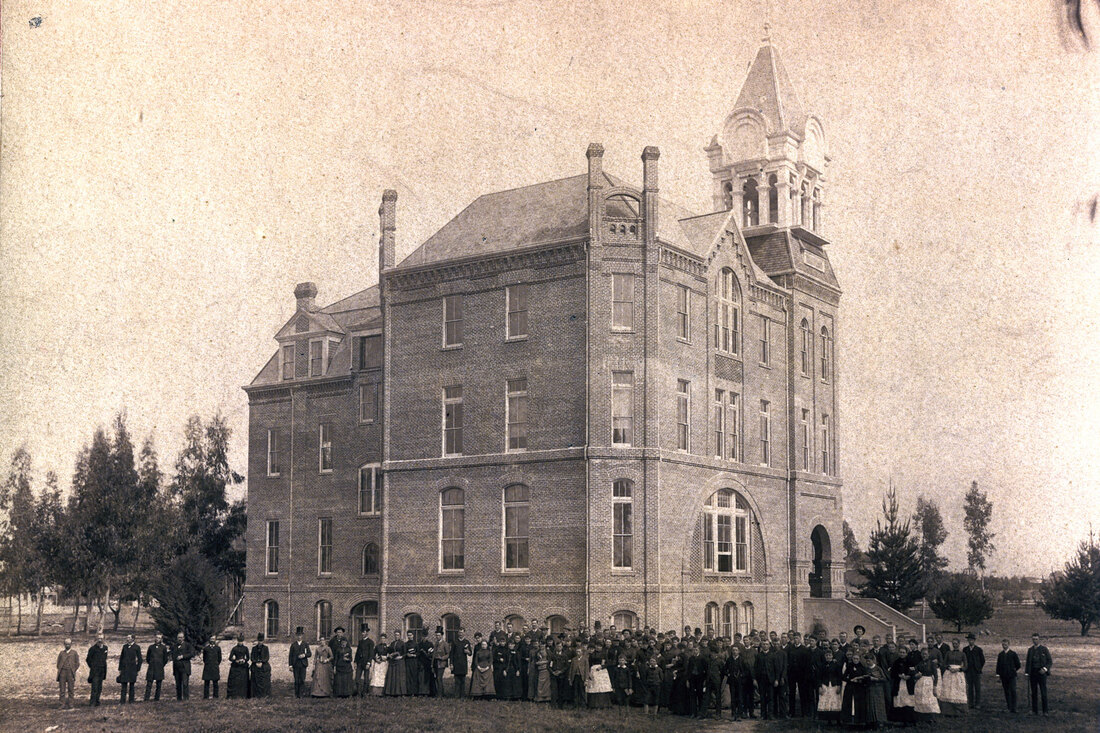|
Opening Salvo: Consulting, it’s the next big business opportunity frontier. From 2011 to present the consulting industry grew by 4-5% YOY on the coattails of increasing supply and demand. More people than ever on record have transitioned out of traditional career roles in the last 15 years to chase the ‘gig economy’ (increasing supply) while companies themselves have developed a steady dependency (increasing demand) on using external support to ensure their operations run effectively and efficiently. While this sounds encouraging, an unexpected outcome of this growth has left many customers with buyers remorse. As more people enter the consulting game the varying levels of experience, service, costs and related outcomes has left customers in a predicament. With a multitude of options now available to companies looking for help one of the biggest challenges afflicting buyers is how they will find the right support while ensuring the money they’re paying for it results in a positive outcome. Author: Travis Smith To view the full article click on the download link below:
0 Comments
The demand for consulting is up, way up!
The US consulting marketplace has grown consistently over the past decade. In the last three years, 2015-2018, consulting services have increased upwards of 25% bringing it to an estimated $68.5 billion U.S. dollars. Demand is up and so is the desire from the US workforce to provide the service. Whether you’re new to consulting hoping to dive in to get a piece of the current demand for consulting services, or you’ve been consulting for years, you’ve inevitably been challenged with the thought… “How should I charge for my services?” Here we’ll give into a quick and straightforward guide for establishing your consulting fees and the things which need to be taken into consideration before settling on your pricing approach. #1: Research the local marketplace – it is imperative you understand what the marketplace yields for the consulting services you plan to offer this way you have an understanding of how you fit in with your competitors and their respective offerings. Best way to obtain this information is to ask others in the business, attend events and get quotes from others in similar lines of work. While you always want to make sure you’re getting paid for what you’re worth, you also need to be cognizant of pricing yourself out of the game. For example, in Irvine, CA there is a large supply of people offering mechanical engineering design services. Baring any unique or niche expertise the average mechanical engineer consultant charges anywhere from $50-80/hr. If you’re charging $125/hr for similar services you may find yourself missing out on projects with potential clients because the end user, or client, has too many other reliable and capable consultant options to choose from at rates cheaper than your offering. #2: Fixed cost vs. time & materials – you’ll need to decide up front what type of pricing strategy you’re going to use. Fixed cost is when you charge a flat fee or a ‘not to exceed’ fee for work you’re performing regardless of the amount of hours it takes you to get the job done. Time & materials pricing structures price based on the amount of hours it takes to complete the job. Read more HERE. #3: Long game mindset – your pricing should reflect both your experience, capabilities but also your willingness to get repeat business from your clients. If your rate is higher than the average marketplace rate for similar service you may still be able to get work, however you may find the client doesn’t pick you for additional work or longer projects. Remember, the higher your rate the higher the clients expectations will be on your performance and the further scrutiny you will receive on your work output. #4: Know your profit margin – it’s important you understand what potential profit you stand to make for each project. Profit is what keeps you growing and stable long term. If you’re constantly breaking even you leave yourself at risk for unexpected downturns and other things out of your control. Establish an ideal profit margin per project you want to achieve and incorporate that into your pricing. Learn how to establish a profit margin HERE. #5: Flexibility is key – clients like working with consultants that are flexible; if you’re too rigid with your pricing you may find you’ll lose out on opportunities in the long run. Try pricing your work based on the difficulty of completing the task. Perhaps you have a minimum threshold you’re going to charge per hour (say $100/hr) and then based on the work you’re potentially taking on you will scale your price upwards by 25%. It’s not uncommon for consultants to have a pricing menu based on the range of their capabilities and difficulty to perform the work at hand. We suggest not using a ‘one size fits all approach’ for pricing your services. #6: Know what you need – while you should never price your consulting practice based on your personal lifestyle (clients don’t care how big your house is, what car you drive or what your bills are so they certainly aren’t going to pay you more just because your lifestyle requires it) it is important to know what you need to be charging in order to meet your personal financial obligations. Once you know this number go back to step #1 in this article to see if your pricing number is in line with the general market. Don’t charge more just because you need more to live. Clients can smell that from a mile away and it’s a big turn off. Key Takeaway: Pricing should be based solely on the value you provide. Your consulting price should have flexibility built into it while keeping in mind the difficulty of the work being performed. Ensure you know how the marketplace is operating and what others are charging for similar services so you can be competitive with your offering. Action Item: Meet 3-5 people in the consulting space which is similar in nature to yours. Learn about their offerings, how they go about pricing their service and what challenges they’ve had with clients specific to pricing. The more you can learn from them ahead of your own efforts the better off you’ll be when it comes time to present your price in front of a potential customer. Are you dealing with the rollercoaster highs and lows associated with being a consultant? (aka gig, freelancer, solopreneur, etc.)
When talking with a customer about their project support needs, do you use a formalized approach or do you just wing it?
Interestingly enough, I was amazed to learn recently that the vast majority of consultants (including solopreneurs) don’t utilize a formal process for collecting information when talking with a customer about a project. As I began asking more questions I learned that this was a habit across the board, regardless of the amount of years of experience the consultant has in business and or their consulting practice. The conservative side of me wanted to run for the hills hearing this. Working as a consultant offers a lot of flexibility, however within this flexibility comes lots of room for alternative view points, ambiguity and of course misinterpretation. When things are loosey goosey we open ourselves up for further opportunity for projects to fail, missing the mark or leaving one or both parties with a sour taste in their mouths at the end of the project. One of the best things I learned early in my career from a more experienced person I worked with was the importance of being disciplined in using a standardized system of help in the information gathering discussions when talking with clients. Why? Because if you don’t it’s amazing how quickly people can interpret things differently than what we had assessed, thought or even heard. What’s worse, is a simple misunderstanding up front at the beginning of a project or relationship can boil up to big issues down the road, including legal actions. For these reasons I use, and always suggest consultants use, a formal process for evaluating, qualifying or assessing project opportunities with customers. This meeting or discussion between supplier (consultant) and customer can be referred to as an ‘intake meeting’, ‘scoping a project’, ‘project qualification’ or ‘project discovery’. They’re all designed to do the same thing – ask questions to obtain information. When you’re in a discussion with a customer about their project needs you’re really trying to figure out one thing – is this the right project/ business opportunity for me to take on? The answer to that question is buried in a flurry of Q&A, best served up using a formal approach where we learn about our customers’ needs, thoughts, feelings and desires for the project and work ahead. Creating a project qualification process document (SOP) before you begin discussing projects with customers ensures you will gather all the information upfront in a consistent manner. This will also lessen the likelihood of you having to go back to ask the customer for foundational questions to better understand the project. Here’s some good questions you could use in your project qualification discussions to determine if this is the right work to take on and customer to work with:
Keep qualification discussions to no more than 30 minutes if possible. As a consultant your most precious asset is your time. All to often customers will spend time talking about things that have nothing to do with the project and or work they’re requesting your help with. Set the tone at the beginning of the discussion indicating you have 30 minutes to talk through their project needs, then moderate the discussion from there on out. Think like a consultant – not an employee. Employees have to do the work their employer asks of them, this is not true as a consultant. Your job is to listen and provide feedback. If what the customer is asking for doesn’t add up or isn’t feasible it’s your job to guide them to an alternative solution and or walk away from the opportunity. Consultants advise and perform the work as an SME. Be wary of situations where customers are asking you to perform a miracle. Projects must be grounded in reality, otherwise you may end up as the one to blame. As you wade through the project qualification discussion with your customer it’s advisable to be on the look out for the following challenges:
As you begin to formulate your approach to these discussions and questions it’s highly advisable to jot it down on paper, creating a template or checklist you can use each and every time. Should you get through the project qualification stage and both you and customer are interested in moving forward to the next stage make sure you put everything in writing that was covered during the qualification discussion. Be specific and direct. Your Statement of Work (SOW) is the backbone of your project and incredibly important in outlining expectations, performance and what happens if changes need to take place during the project. Key Take Away: As a consultant your most precious asset is your time. Use a formal and formatted approach to your project qualification discussions with your customers to ensure you collect the right information up front to better determine if the project in question is the right opportunity for you. Can you deliver the goods inline with the customers expectations? Action Item: Create a project qualification template or scoring matrix to use in your customer discussions to obtain all the information needed up front for the project. This removes all the guess work. Your template should include both exploratory questions to get your customer talking and sharing with you the in’s and out’s of the situation while also simple ‘yes’ and ‘no’ questions like “is this project approved?. Once you’ve completed the discussion with your client tell them you will get back to them after you’ve had an opportunity to digest the information you gathered. This will give you time to allow the information to sink in, time provides perspective. Sometimes a scoring matrix can be really beneficial in this situations especially if you have multiple project opportunities with multiple customers because it allows you to objectively rank each project opportunity against one another. Pick the best or most lucrative projects and say adios to the others. When was the last time your team, or company for that matter, delivered a project or product on time? Sounds like an easy and obvious question to answer however the reality would surprise you. Failure to deliver the goods, on time and to expectation, happens much more than most of us realize. In fact, we’ve become accustom to our expectations not being met, so much so that we barely even notice it anymore. UPS and FedEx are heralded as two of the best shipping and freight companies globally. The two combined do more than 24 million daily shipments on average. That’s a lot of Amazon orders. Did you know that a combined 19% of those packages don’t make it to their designation on time, or at all? That’s 4.5 million packages miss the mark, EVERY DAY! You may be thinking, “Why should I care about what happens at FedEx, after all I don’t work there.” Missing deadlines, or delivering the proverbial goods late, is more than just a shipping issue, it’s a global business issue and frankly it’s very bad for business. When we miss deadlines, or customer expectations for that matter, we experience all sorts of negative exposure, including:
When UPS or FedEx misses a delivery or puts a package back in que which should have already been delivered the ripple effect created for that driver and route can impact an entire days’ worth of work, or more.
Same thing can be said for our customers. We got a call two weeks ago from a customer asking for help on a project of theirs which had already missed its deadline. Our customer, was two weeks past due on their product delivery date for their respective customer. Needless to say their customer was less then enthused. In fact, every day they fell behind in shipping their product they lost 11k USD in billable revenue. With costs surmounting quickly eating into their profit margin their customer also became wary of their ability to execute as they had hoped and expected. Phone calls between the two companies became increasingly frequent with the client becoming increasingly upset. Threats of the white-collar kind became a start to each call. Not a good position to be in. [thanks Captain Obvious] Our customer asked us to bring a team in and offload some of their work, mostly protocol and process related, so they could focus all their efforts in satisfying the commitment they made to their customer. Our team was to alleviate the bottleneck of work they were experiencing so other internal projects wouldn’t keep backing up as they had already begun to do. Once the bottleneck begins its incredibly challenging to get out of that rhythm and back on track without extra help. These types of moments are highly intense and stressful. One of the things our customer did with their end customer, which I found to be of high integrity and good professionalism, is they painstakingly told their customer what had happened to make them fall behind, apologized and took ownership for the failure to deliver and immediately shared with the customer their course of action to solve the problem. While their customer was rather upset along the way they did acknowledge the apology and things seemed to get underway shortly thereafter. The product ultimately was delivered 3 ½ weeks late of schedule costing our customer close to quarter of a million dollars in missed revenue. Tough lesson to learn on the importance of hitting deadlines and meeting expectations. Key Take Away: A wise person once said, “sh** happens”. A profound statement to say the least yet certainly true. Sometimes things do happen that are out of our control, taking ownership of the situation and asking for help can be the best two decisions we can make in these moments. Action Item: Don’t decide to ask for help when you’re already in hot water. If you’re watching your project timelines begin to slip immediately put in a plan of attack to lean on your suppliers for help. If your relationship with your customer is on good footing still you can try to proactively ask for an extension on the delivery date with the hopes that will provide some cushion to get work done on time. Note – don’t get in the habit of asking for deadline extensions. Once is fine, but to ask that of a customer often signals your company is unorganized and lacks leadership to meet it’s obligations. In need of someone to help you climb out of your project bottlenecks? Contact Square-1 Engineering at www.square1engineering.com to learn how we can help your solve your biggest engineering and technical business challenges. Your company is booming. Work is plentiful. Everyone is up to their eye balls in a flurry of activity. As your company works through each project you inevitably get hit with an unexpected curve ball that pauses your momentum, causing you to go off track. We’ve all been there and for some of us this is a daily, if not weekly, occurrence in our business. Learning how to deal with the unexpected and therefore being audible ready with a problem solving mentality very well may be one of the most important characteristics an employees can have. Yet, what do you do when your skills are maxed out and you don’t know how to solve the problem or get the project back on track? (note – the answer is not to turn to Google) Call your local Subject Matter Expert! (SME) John Reh of Balance Careers put it perfectly, “A subject matter expert in business is an individual with a deep understanding of a particular process, function, technology, machine, material or type of equipment. Individuals designated as subject matter experts are typically sought out by others interested in learning more about or leveraging their unique expertise to solve specific problems or help meet particular technical challenges.” It’s a mouthful, but 100% accurate. I experienced a situation last year where we had an opportunity to support a customer on a short term, one off project, where we were being brought in to provide guidance on product packaging and manufacturing sterilization methods. While we’ve done this kind of work plenty of times before I was initially concerned that this project would inevitably be different because this customers technology is by far one of the most complicated we’ve had the opportunity to work on. That said, it’s one of the reasons we love working with this customer. As the project came closer to deploying I realized our traditional approach to projects of this nature wouldn’t get us across the finish line, and or within the time frame we needed to in order to meet our deliverables. After making a couple phone calls we were able to get connected with a medical device industry expert in class III sterilization. Five minutes into the conversation with this guy, who we’ll refer to moving forward as Benji, it was crystal clear that Benji’s skills were far and above the average manufacturing engineer in our business. So much so that he unfolded a myriad of considerations in approaching a project of this nature, of which only half of them had already been considered by my team and the client. Needless to say I was beside myself with Benji’s expertise and understanding of sterilization processes and their requirements when it came to product packaging. It’s one thing to understand a concept, it’s an entirely different thing to be able to understand something so innately that you can apply that knowledge to myriad of applications, and do so in a timely, accurate manner. The cherry on the top here is being able to apply this knowledge in situations where there is no precedent to work from, in our situation working with cutting edge technology. As the project got underway Benji quickly took command of the project, assessed the current state of the product, it’s manufacturing processes and requirements for proper sterilization. He met with a slew of suppliers, performed material characterization studies and tested several processes in an elaborate and highly systematic process. The end result? We, thanks to the help of our Superhero SME Benji, successfully identified a sterilization process which both met our customers needs and did so in a way that exceeded their product packaging and manufacturing requirements. Best part, this was all accomplished 2 weeks before the project deadline! I look back on this project and sometimes wonder what would have happened if we had gone the typical route and project deployment for this type of work? Would we have finished on time? Would we have met the customers expectations? If I had to guess, probably not. As a result, our choice to bring in a Subject Matter Expert (SME) to handle the work for us and guide us to the promise land was by and large the best choice we could have made. A choice that benefited both our company and certainly our customer. Key Take Away:
Don’t try to do everything yourself. Sometimes the best answer is to lean on an expert who’s experience in a particular area is light years beyond your own. This is a good time for us to set aside our egos and ask for help from people who are capable of getting us the solution we need while teaching us along the way. It’s worth every penny! Action Item: Don’t wait until you need an SME to begin looking for one. Start reaching out to industry associations, your personal connections or your suppliers to build a pool of people who have expertise in specific areas your business are involved in. Keep track of these people in a contact management tool or at a minimum Excel spreadsheet which provides detail on each SME’s capabilities, hourly rate or cost, location, typical availability, etc. Next time a challenge comes up you can’t readily answer yourself you’ll now have an ‘SME hot list’ of people you can access immediately to solve your business and project challenges. In need of an SME? Contact Square-1 Engineering at www.square1engineering.com to learn how we can help your solve your biggest engineering and technical business challenges. You’ve found yourself in consultant heaven having more clients and projects than you know what to do with. Like a dog chasing the car you’ve managed to catch the car (lot’s of projects to keep you busy) but don’t know what to do with it (how to deliver successfully) now that you have it.
If you have multiple projects, multiple clients and or just more work than you know what to do with consider these steps to improve your day and operating rhythm so you can focus on successfully delivering on your projects while keeping your happy customers: Communication Protocol – happy customers are informed customers. Customers don’t like to be treated like mushrooms – fed piles of crap while being kept in the dark. Establish a daily or weekly communications agenda which keeps you on track of your client updates and check-in’s. Consider creating a communication checklist via Microsoft Excel to help with consistency. (or see ‘Invest’ for tools to help with this) Invest – don’t be cheap. Make the investment in a project management tool which will help you stay on track with your projects while giving you a professional interface to use for customer presentations, etc. There are literally dozens of tools you can choose from like Asana, Jira, Microsoft Project, etc. When your work is structured, nice and tidy, your results will reflect it. Establish Customer Expectations – read this link on how to set customer expectations Get Organized – everything from your work space to how you spend your time should be constantly reviewed and altered to improve performance. Time management is key to your success, ability to deliver and to obtain more work. Find ways to reduce busy work, unnecessary check ins or onsite visits with clients. Sometimes visits are crucial and needed, but not always. When reviewing your actual project tasks create different to do lists/ project task lists for each client then merge them so you have one list broken down by all of your clients and required activities per day and week. (FYI – most project management tools do this for you while producing Gantt Charts which can be shared with customers – another reason to invest in technology.) Delegate – Undoubtedly there are aspects of your projects you just don’t like to do yourself. Do you know other people that can help you with some of your work? It pays off to have a small trusted group of allies, other consultants such as yourself, that you can bring in from time to time to help with various parts of the project. This allows you to focus on the work you enjoy most. Say No – one of the most powerful things any professional can do is to say ‘No’ to things or opportunities which don’t align with their key focus. This goes back to how we choose our time and where we spend it. We can’t be everything to everyone. If a customer makes a request that is outside of your capabilities kindly say ‘No’ then point them in the right direction to a possible solution elsewhere. #gogiver Key Take Away: Consider investing in a project management tool to streamline your work while having an organized infrastructure for your consulting business Action Item: Review all the projects you have concurrently and make a task and timeline list. Embedded those tasks into your week based on the deliverables then begin working towards fulfillment of those tasks. For the past 13 years I’ve worked exclusively supporting Orange County, CA ecosystem of growing gigs (aka consultants, freelancers, etc). It’s been a while ride to say the least with endless learning opportunities along the way!
During my time working with gigs and professionals alike I seem to find myself engaged in a variety of conversations having to do with professional guidance. I’m certainly no career counselor but have witnessed enough over the years to have noticed more than a few trends with the path and decision making an average career takes. One of the most consistent questions I get from people I’m interacting with is… “How can I become a consultant [gig]?” This question is interesting in of itself because the very statement overlooks a very important consideration: do we understand what the life of a full-time consultant is like? And just as important, can I keep my full-time job and do consulting (aka freelancing, moonlighting, etc) on the side? Lastly, why are you considering being a consultant in the first place? Before you start considering leaving your comfy desk job for the wild ride of becoming a career consultant spend time thinking about how you feel and perform with the following:
Key Take Away: Check yourself before you wreck yourself. (thanks Ice Cube for that insightful lyrical melody) Ice Cube was on to something here – before you jump into [consulting] spend time to learn about the life of a consultant and the realities that come with it. Action Item: Rather than leaving your day job, start your consulting experience by picking up a couple small jobs you can do on the side in the evenings or weekends. This will give you a chance to learn how to interact with clients, manage projects and your time. Do 3-4 projects then reassess those experiences, what you learned, how you performed and things to change for the future. Once you’ve done that you’ll have a better perspective of the life of a consultant and whether or not its right for you. The number one reason people opt out of entrepreneurship, which includes starting a business, being a solopreneur or even independent consultant, is fear. The wild west of entrepreneurship can come with a lot of unknowns as ambiguity and uncertainly is often synonymous with starting a business. It can be especially distressing for first time would-be-entrepreneurs to make the leap into small business as a result. The transitionary period from corporate life to entrepreneur, even the thought of this transitionary period, is marked with great concern and fear which keeps people from making the jump. For some it may be security at the current job, others it may be a lack of know-how in starting a business or simply a lack of self confidence in ones’ ability to make it on their own. Regardless of the reason, fear is a factor all potential and current entrepreneurs must overcome. I’ve found the best way to overcome fear is to confront it head on. Fear grips us all, regardless of occupation, experience, background or capabilities. The difference between the people who let fear own them versus those who use it as a tool to achieve comes down to two things: acknowledgement and action. Rather than worry, it’s important we address our fears and understand them. When we take the time to acknowledge our feelings and emotions it allows us to better process why we’re feeling this way, at which point we can begin to build a strategy for using those fears as a motivating force towards success. Taking action against our fears comes in the form of slowing down, identifying your feelings, understanding the situation and then planning accordingly. If time is on your side rest easy knowing that you can plan to be an entrepreneur first before you ever jump in the ring. Create an attack plan, identify potential challenges and solutions on how to deal with them. While you won’t be able to plan for everything taking a proactive approach to dealing with fear and using it as a tool perhaps may be enough for you to finally make the leap into the world of entrepreneurship. Key Take Away: Address your entrepreneurial fears head on, understand them and own it! Action Item: Use your newly addressed fears as a guiding force to plan your entrepreneurial transition into being your own business owner. Build alliances, or peer groups, with other business owners to help with the transition while learning from their experiences along the way. Interested in learning more about entrepreneurship and hearing stories from people who have made the leap into business ownership? Check out this event in Irvine, CA on 10/24/18: https://www.devicealliance.org/event/entrepreneur-event/ It’s happening all around you and chances are you haven’t even noticed. Don’t feel bad, you’re not the only one that may have missed it. There’s a lot of attention being drawn to a specific area of our domestic workplace which stands to change much of what we know about working for corporate America in the very near term. Meet the Solopreneur! A Solopreneur, we’ll call them ‘Bob’ for purposes of this article, is someone who owns a business, yet has no formal employees. (W2 employees) Bob represents a fast growing portion of the US economy and he’s got a lot of friends interested to learn more about what Bob does, how he did it and how they can get in on a piece of the action. According to the SBA Bob’s makes up an estimated 70% of all small businesses across the country. Furthermore, Intuit released a study that estimates 40% of ALL businesses in the country will be like Bob by 2020. What does a Bob look like? As mentioned a moment ago it’s someone who is in business and is the sole employee of that business. They’re owner, operator and doer all in one. They come in all shapes and sizes and their most popular amongst Baby Boomer and Millennial generations. In years past our Solopreneur Bob has had more traditional titles like Consultant, Contractor or even Gig Economy. They all represent the same thing which is someone who does work on behalf of others through their own means – and this type of work is growing quickly. If we follow the laws of supply & demand we find that when there is demand for something the market typically reacts, responding with a solution. Why is it then there is such a demand for Bob? The uptick in Bob’s is caused by three major factors: 1. Our workforces’ desire for work life balance and flexibility in their jobs. 2. Company’s desires to reduce overhead costs associated with hiring full-time employees, especially as the cost of having employees continues to rise. 3. Company’s desires to continue to find more efficient means of getting work done. With all these Bob’s running about its only natural to wonder how this might impact the overall workforce as we know it. Here are the top 7 workforce impacts that we could experience as a result of the Bob’s. 1. As more people move towards the Solopreneur career it becomes harder for companies to control their internal culture and keep their employees motivated amongst the constantly changing faces in the office. 2. The old thought process which said “to build a great company we must hire great employees” quickly diminishes as companies are hiring Bob’s who are experts in specialized areas to produce quicker than normal results. Efficiency is the driver of many of our decisions in the business world. 3. Companies become more agile as they use flexible resources allowing to bob and weave with the economic punches. (pun intended) 4. It’s possible our workforce could become fractured as Bob’s risk alienating themselves due to the isolation that comes with being on their own 5. The need for excellent leadership increases dramatically. We’re already at a deficit now with good leaders in our country but with a larger portion of our country working independently it will be crucial for companies to have exceptional leaders which are capable of meeting objectives while successfully motivating both internal and external resources 6. People who choose to go the Bob route and do so successfully may find much more enjoyment in their careers as they are making both a difference in their respective industries as well as an internal drive to truly be independent 7. Being a Bob isn’t always easy. The fact is that in order to be a successful Bob you have to know how to sell and market yourself and your services. If you’ve never done that before allow me to be the first to tell you selling and marketing a service is not easy nor for the faint of heart as rejection is common place in the Bob business. As a result it is likely many would enter into a Bob career to only sputter out in a year or two after they’ve realized it’s more demanding than a normal 8-5. Whether you’re a fan or not of the Solopreneur, Bob phenomenon, the fact stands that it’s a growing need in our workforce. What does the Bob-life mean for you? By the by, I happen to be a Bob myself! About the AuthorTravis Smith is the founder and managing director of Square-1 Engineering, a medical device consulting firm, providing end to end engineering and compliance services. He successfully served the life sciences marketplace in SoCal for over 15 years and has been recognized as a ‘40 Under 40’ honoree by the Greater Irvine Chamber of Commerce as a top leader in Orange County, CA. Categories
All
Archives
July 2024
|
||||||
Visit Square-1's
|
|


















 RSS Feed
RSS Feed


